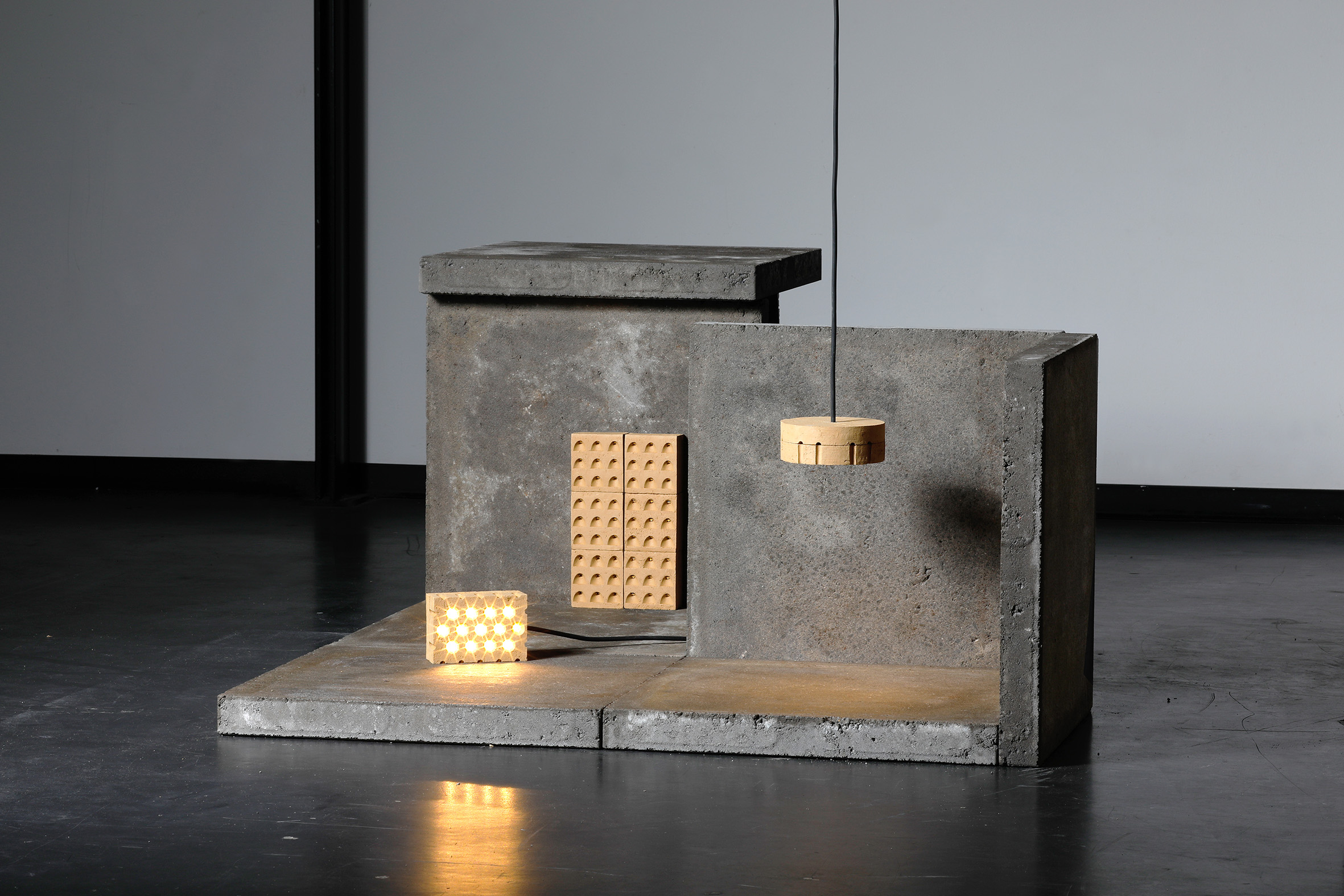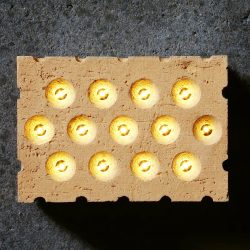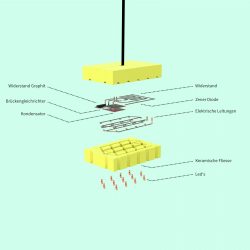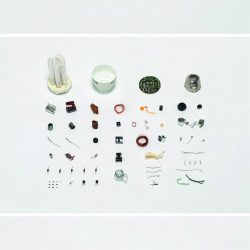Brittle Objects
Description
The collection "Brittle Objects" presents a redesign of the common LED lighting. The project introduces a combination of circular materials in a novel setup aimed at facilitating an easy and homogenous reuse and recycle of each required resource.What is the Topic?
Visits of recycling plants for electrical appliances set the starting point of the project. On site, composite materials are being separated in a step-wise process before the individual fractions can be sorted. The exact practices have to be adapted regularly to respond to the ever-changing requirements and demands that arise from new materials or production methods utilized by the manufacturing industry. “Brittle Objects” outlines a concept to turn around this process. What would products look like that actually are designed to be deconstructed and used as resources later?
Why does it look like this?
The collection includes three different types of luminaires: wall, ceiling and suspension lamps. Two interlocking, three dimensionally shaped tiles form the building blocks and jointly house the electronic components while providing electrical insulation, cooling and optical glare at the same time. Integrated canals derive the LEDs’ heat to the outside – mimicking the functioning of a chimney. The coarse-grained clay casing creates a clear visual contrast to the technical interior of the light. This setup shall stimulate a new user perspective on electronic products.
What is special?
A single stroke suffices for the deconstruction of a conventional light bulb. This simplicity is the inspiration for the construction of “Brittle Objects” and the adaptation of the LED lighting. At the recycling plant, “Brittle’s” ceramic parts can be broken apart easily to release the electric core which can then be sorted using magnets.
What is new?
The electric components are setup in a grid structure – similar to the construction of reinforced concrete. This makes the use of a circuit board oblivious. The ceramic tiles hold the electrical components in place and in some cases even take over some of their functions. This reduces the number of required components and, in the end, the amount of hardly recyclable materials. The concept requires an unusual focus on designing the assembly, sizing and configuration of the electrical components. Its development builds on a close collaboration of different disciplines.






